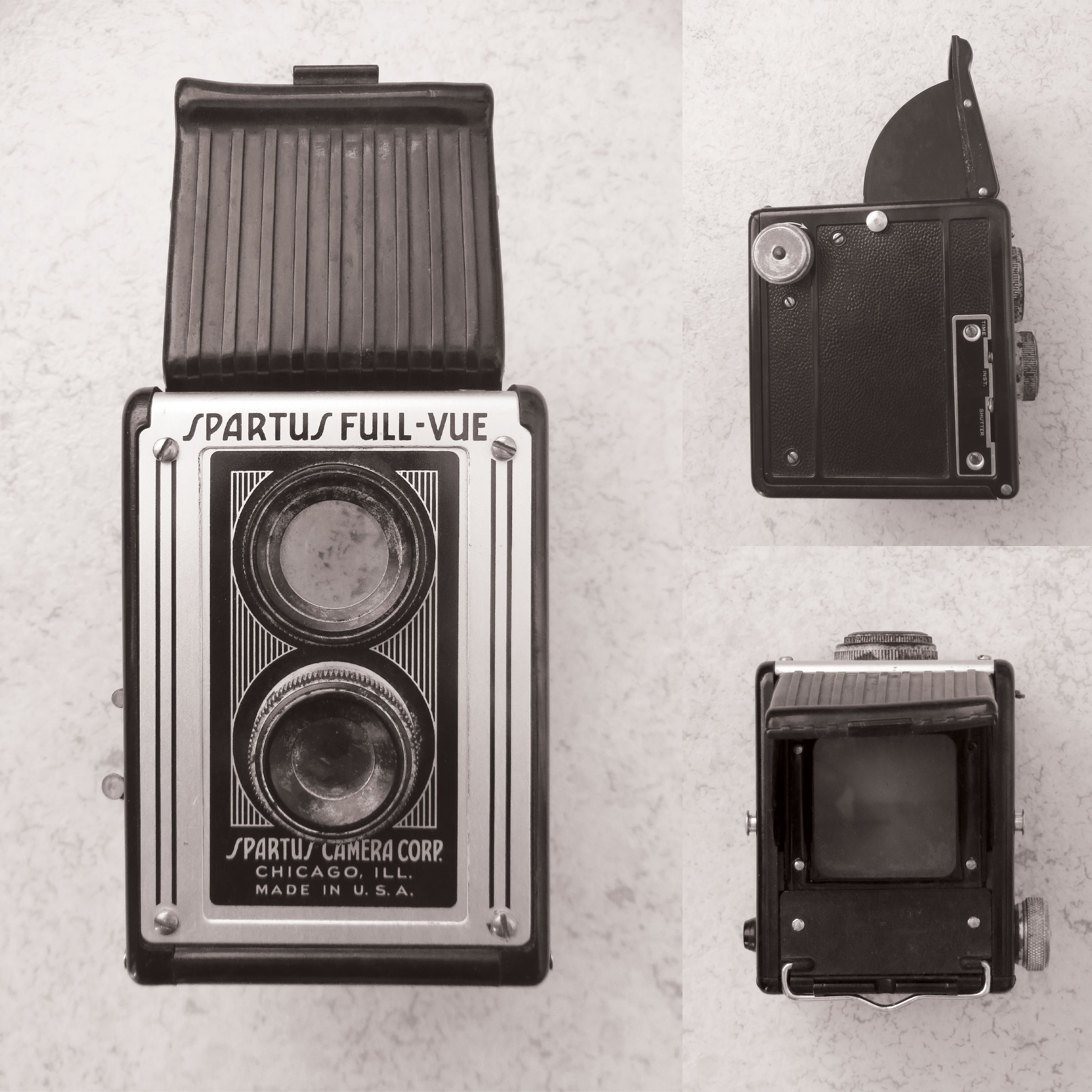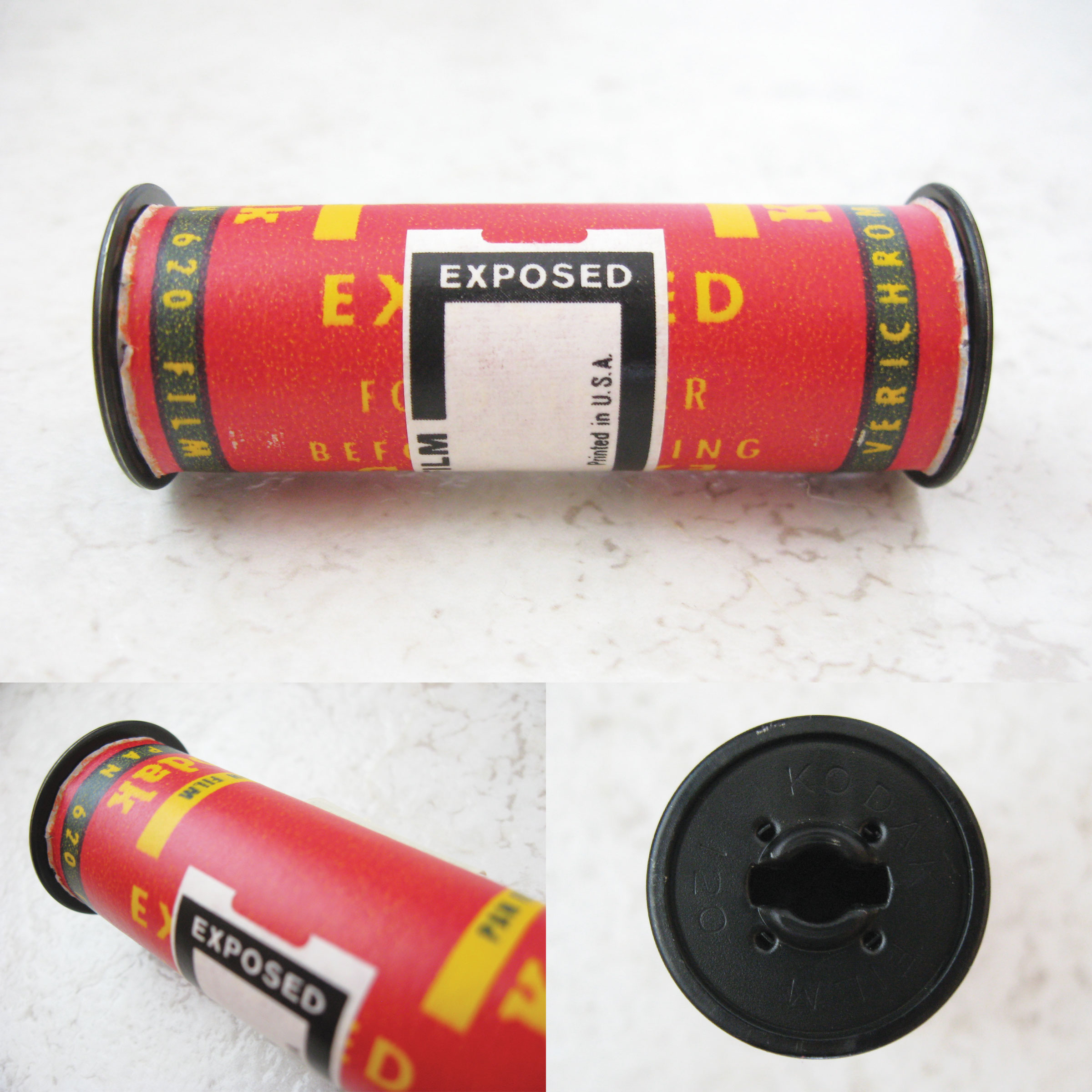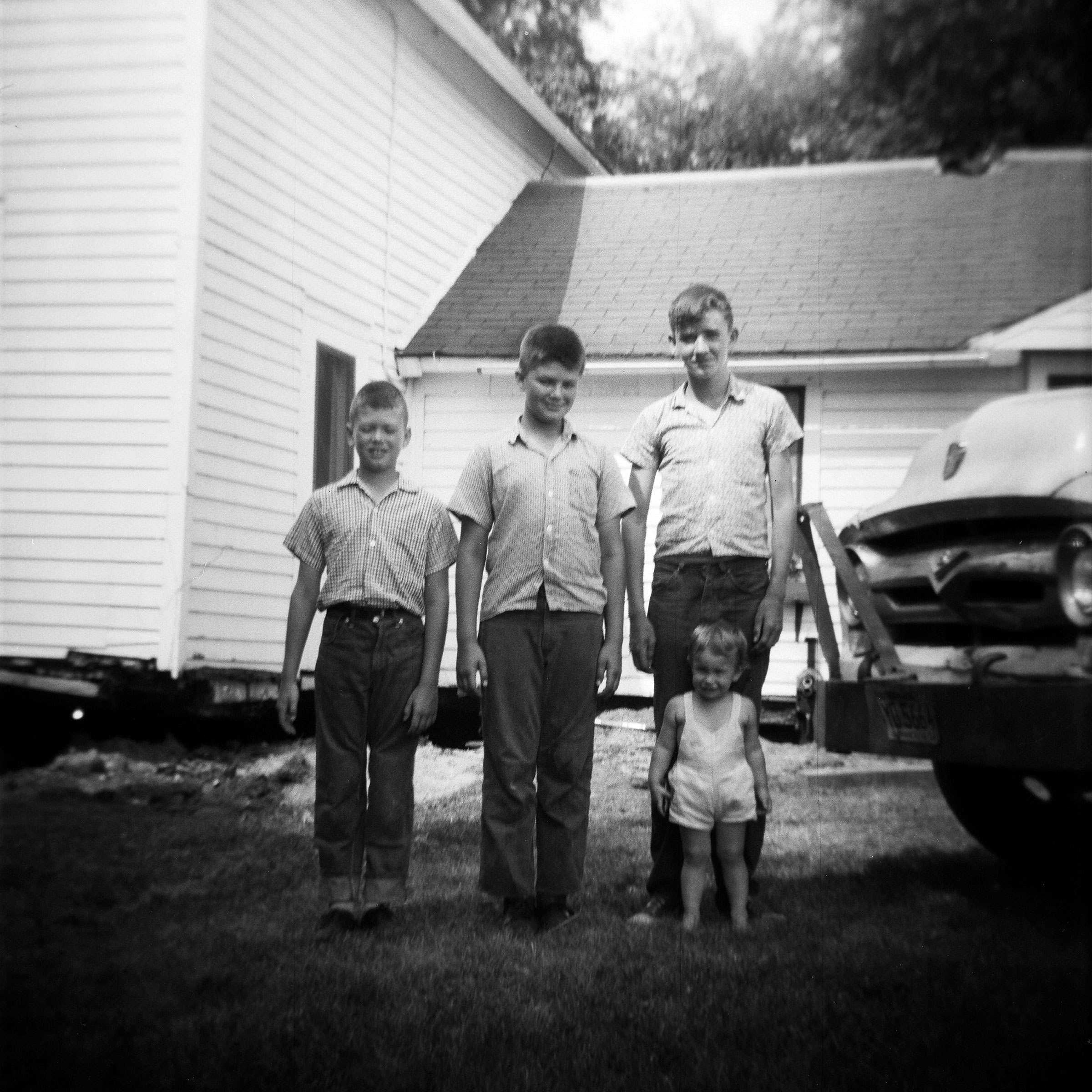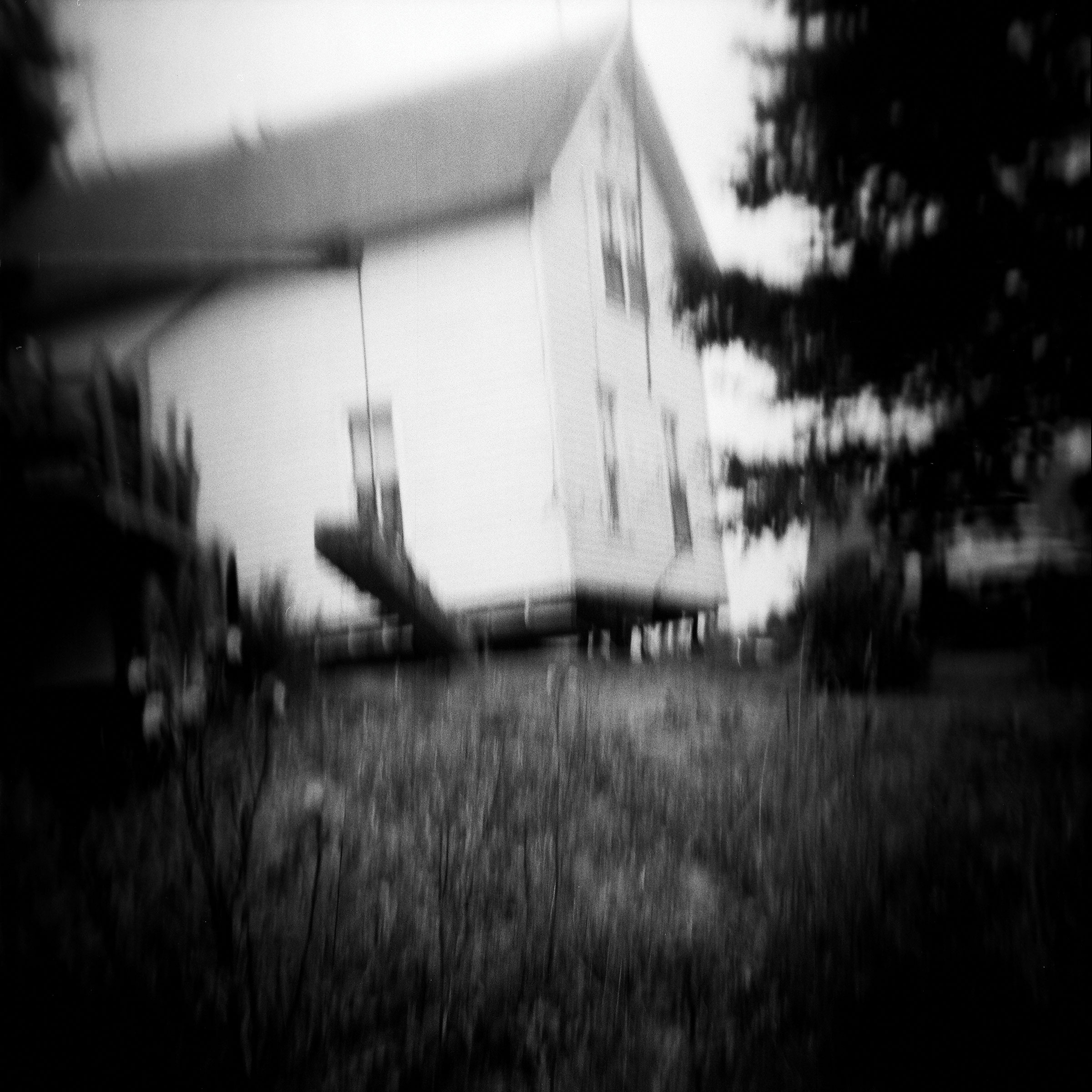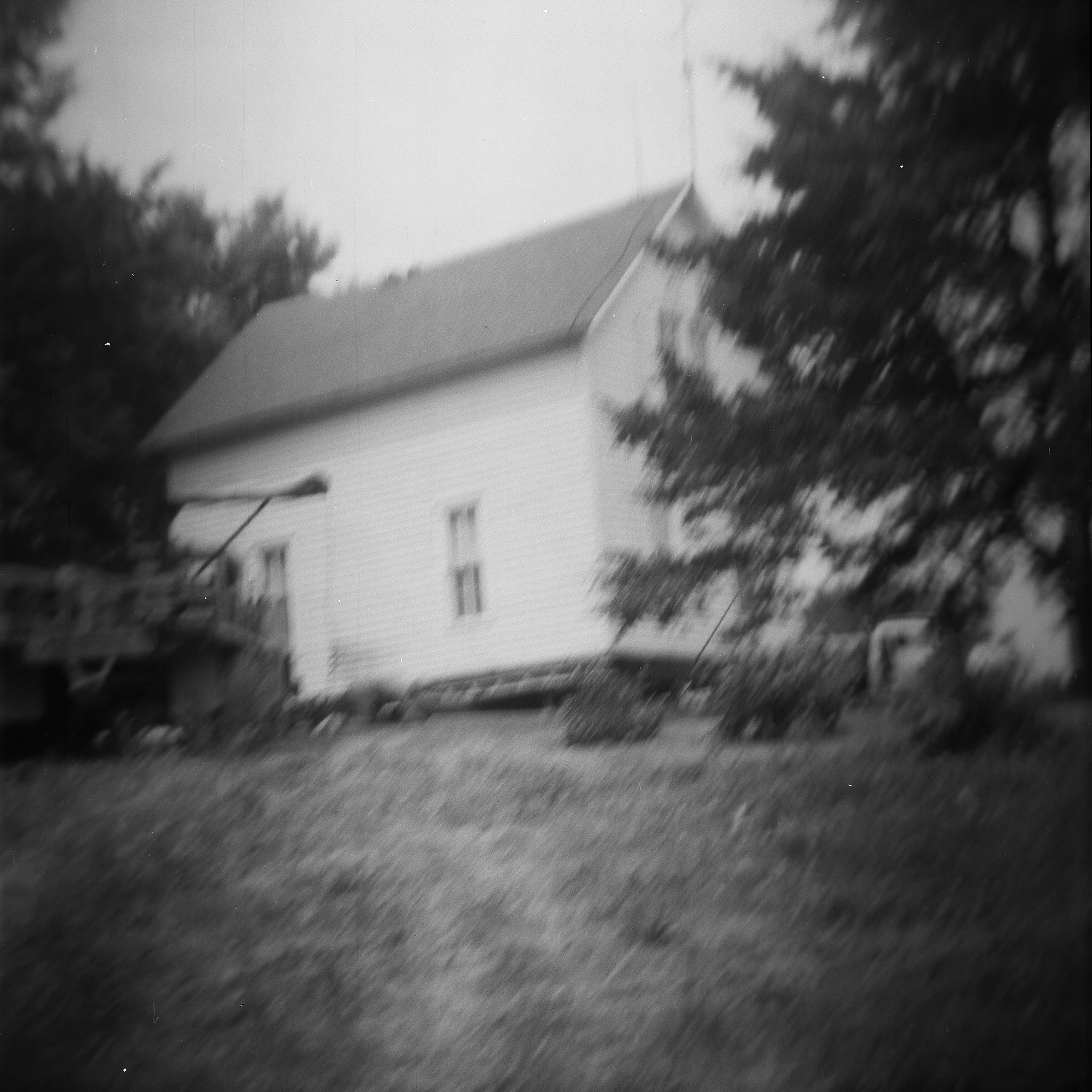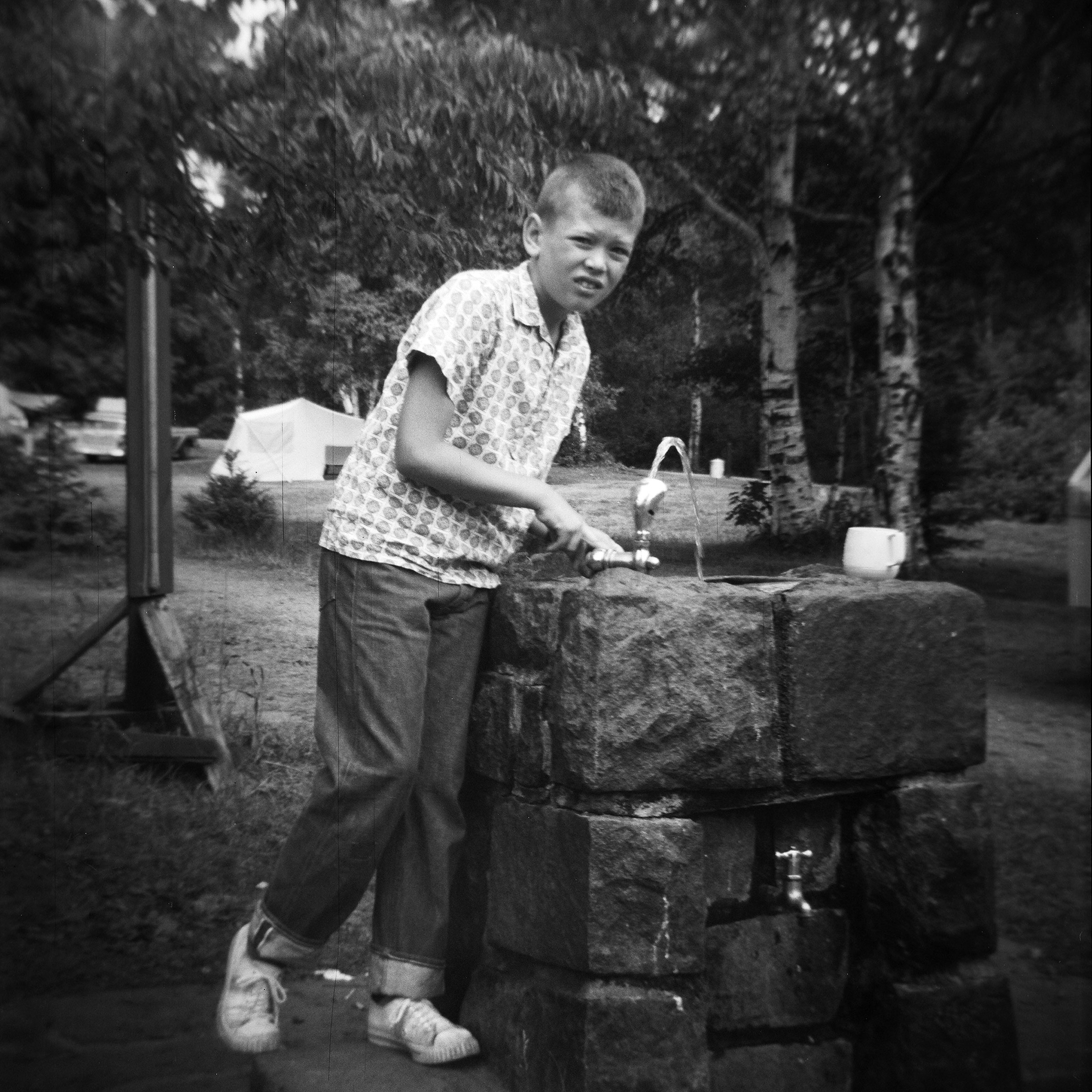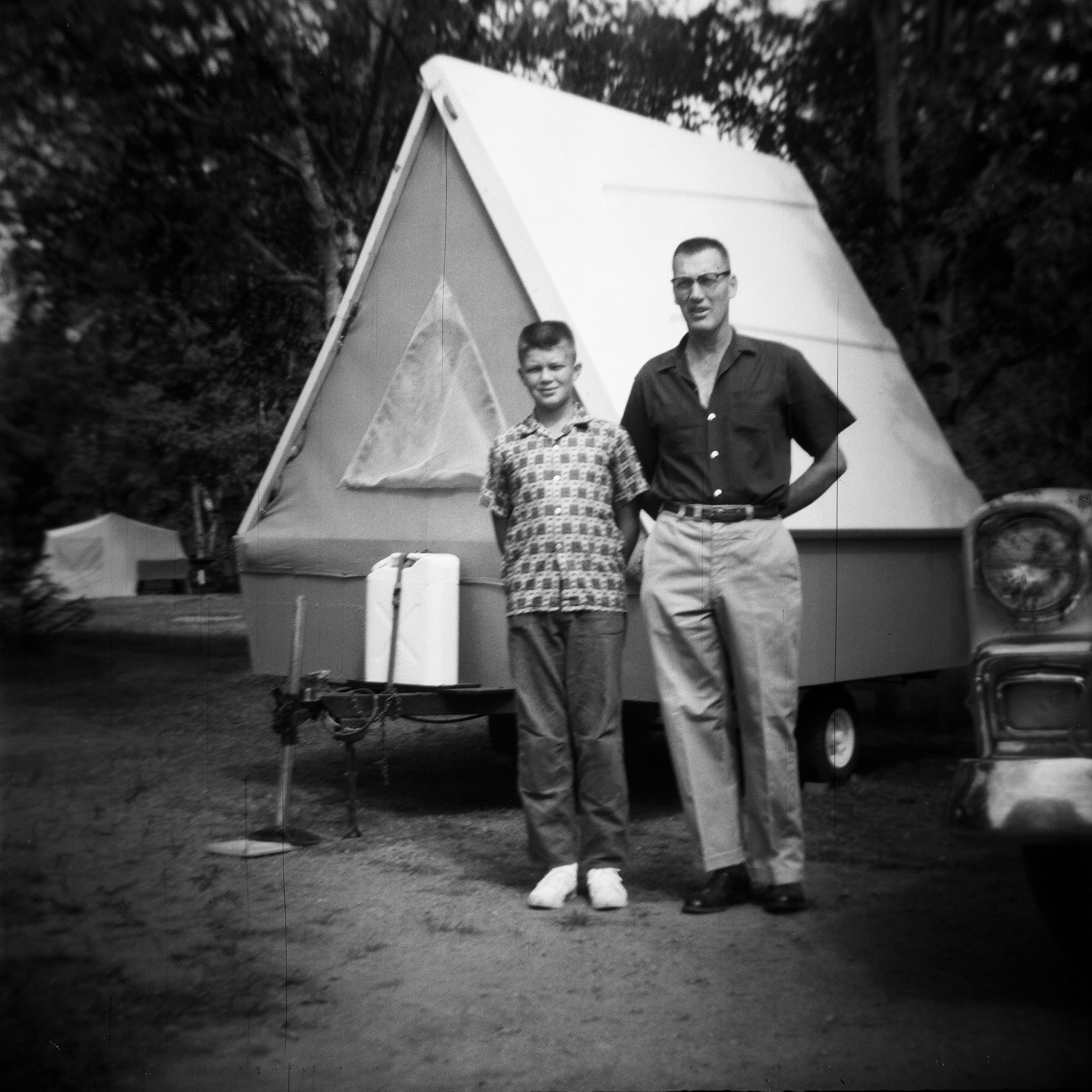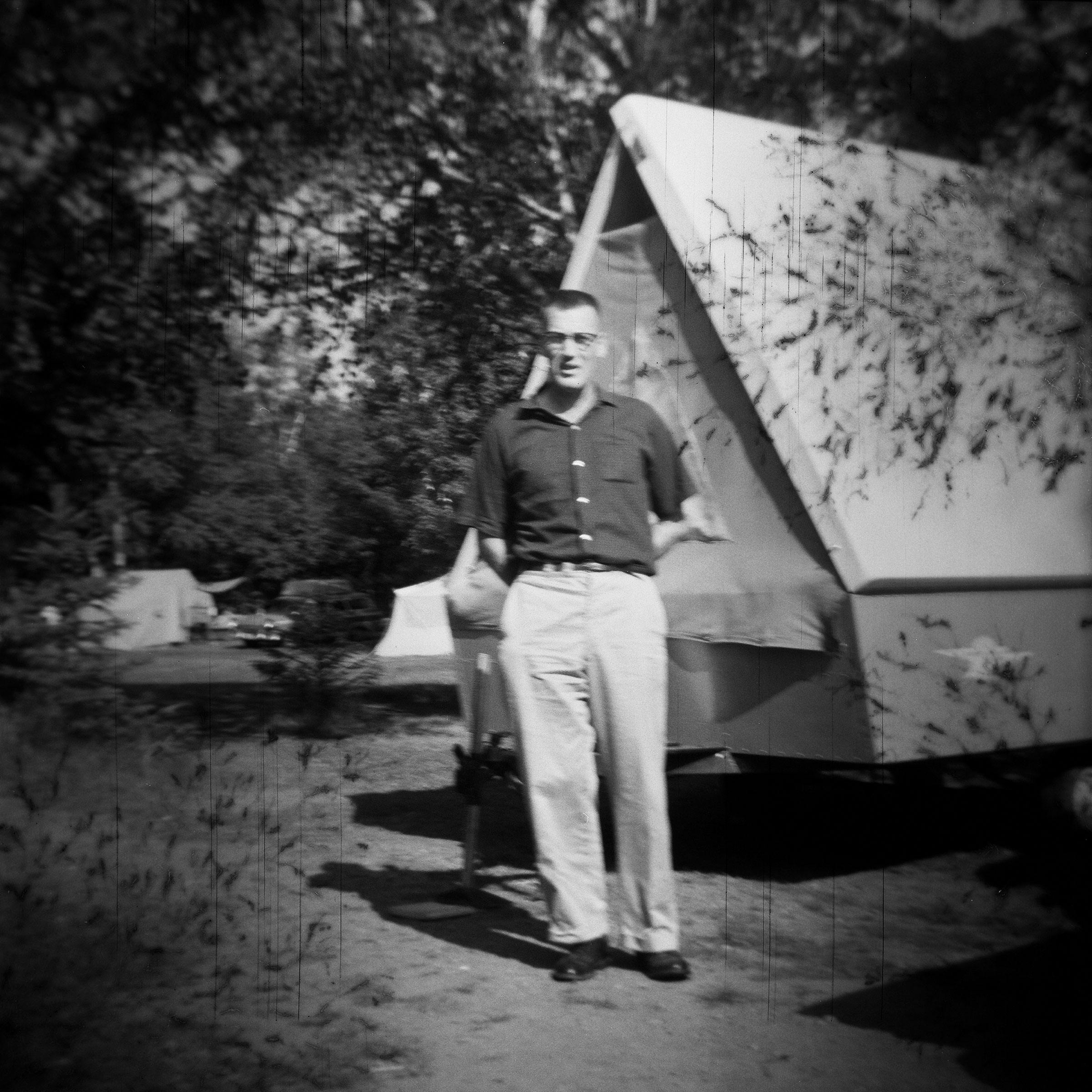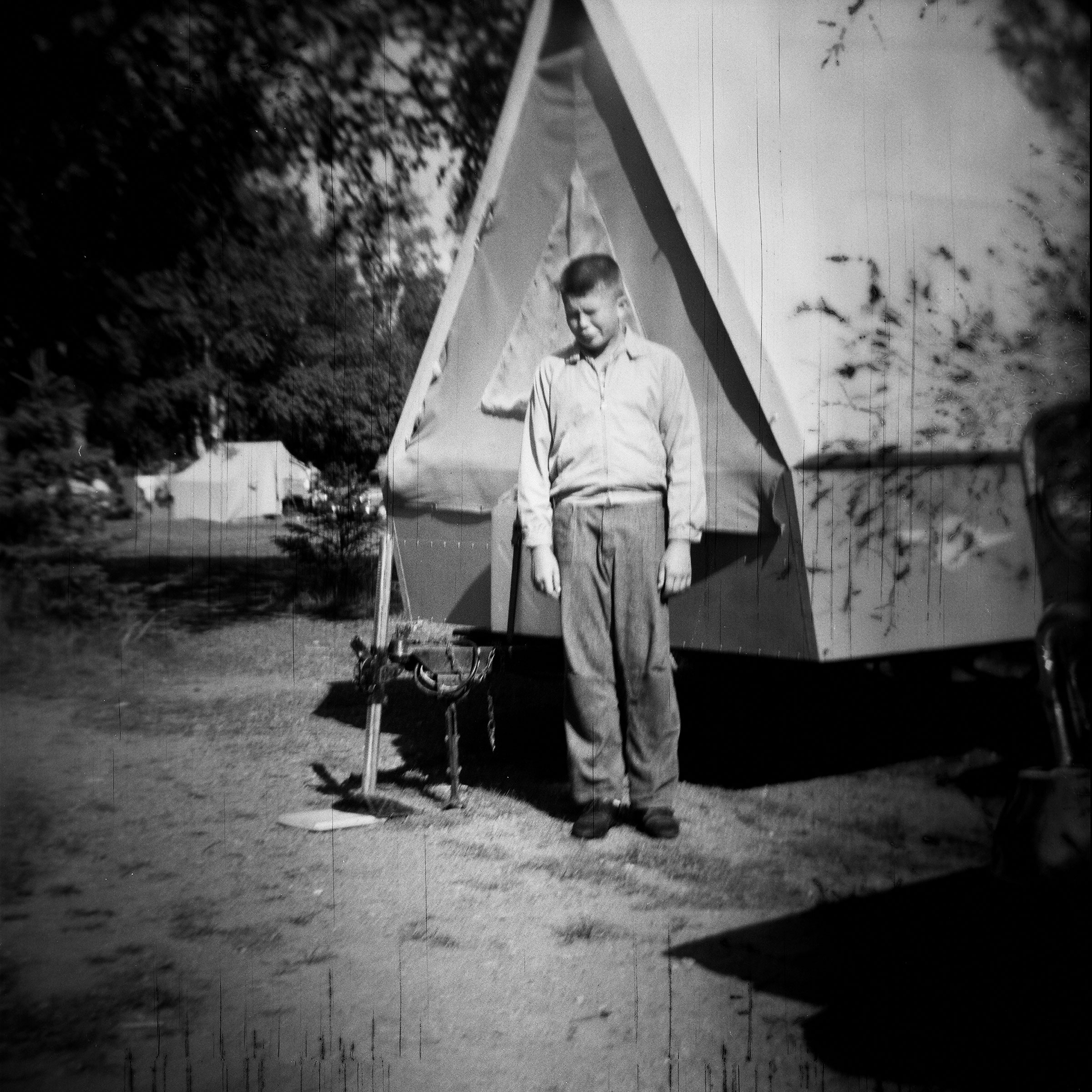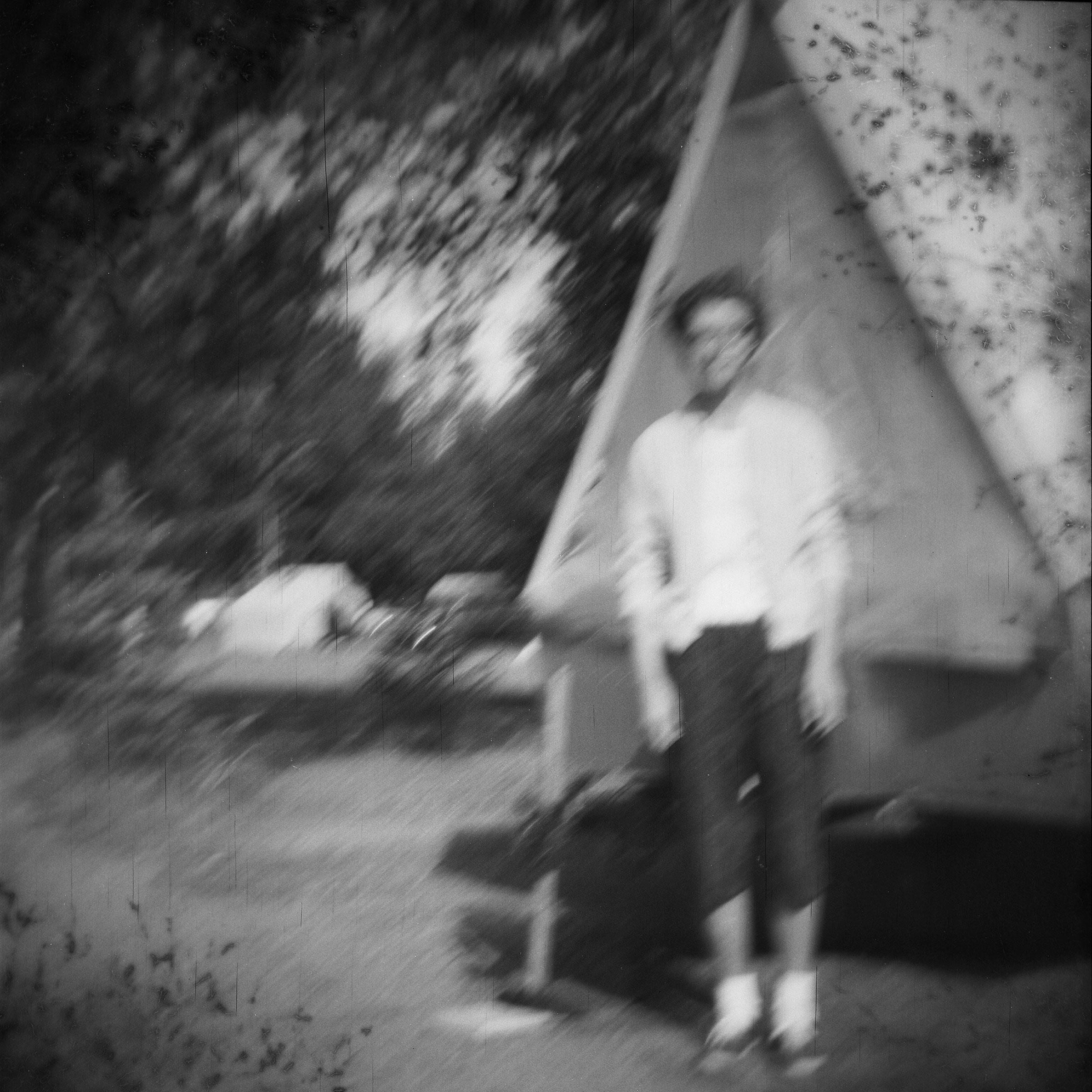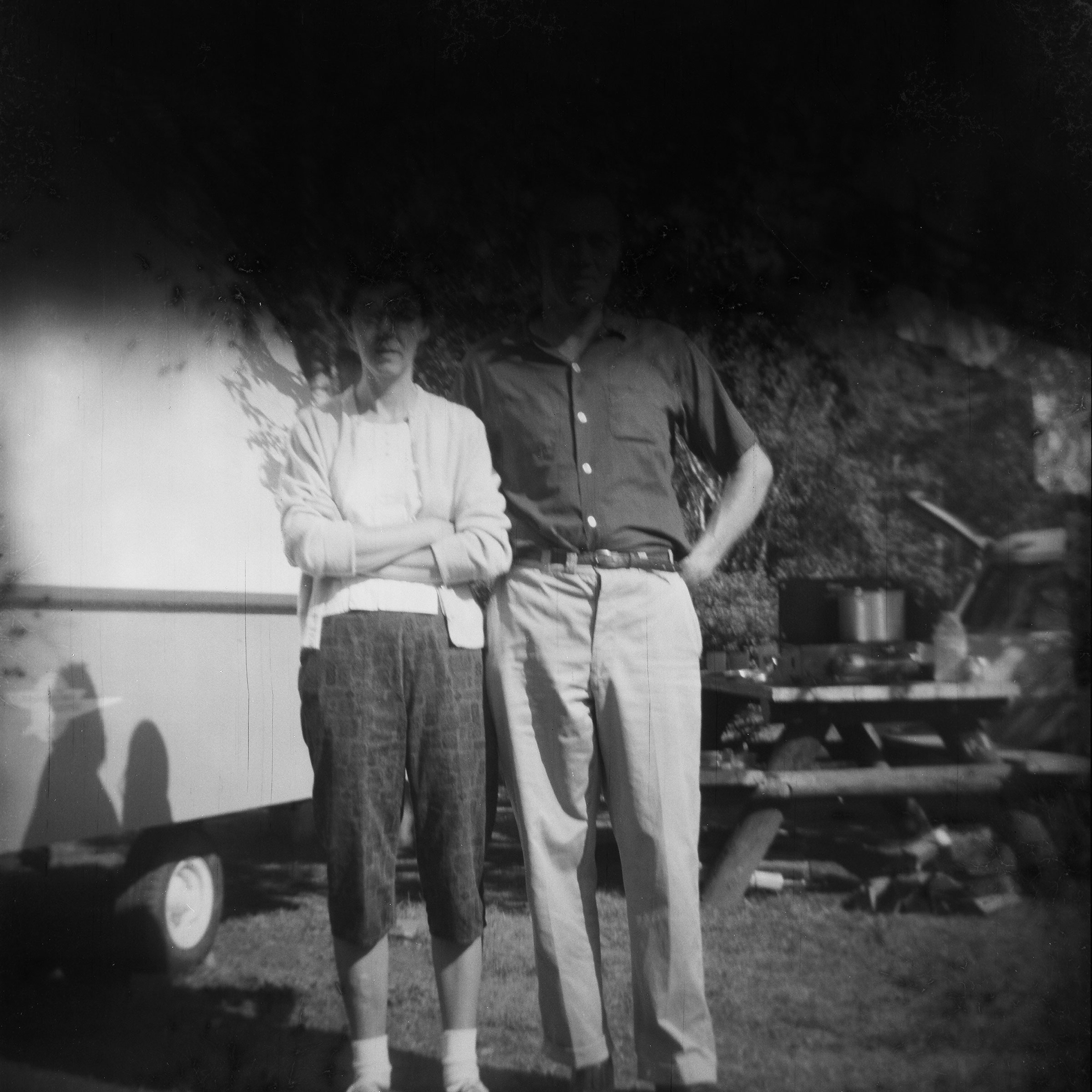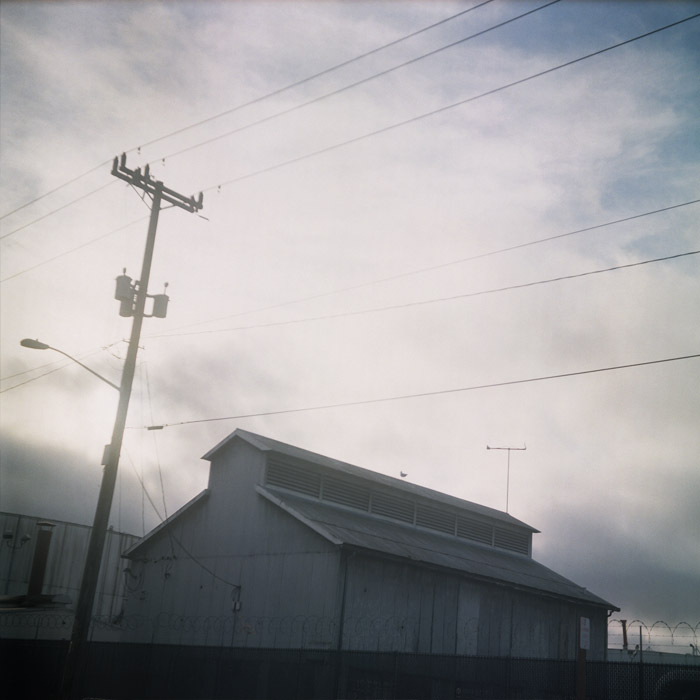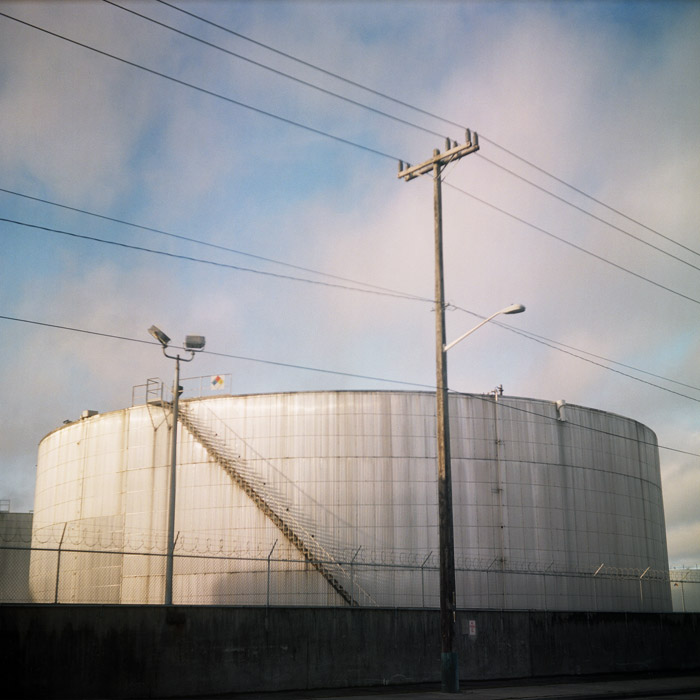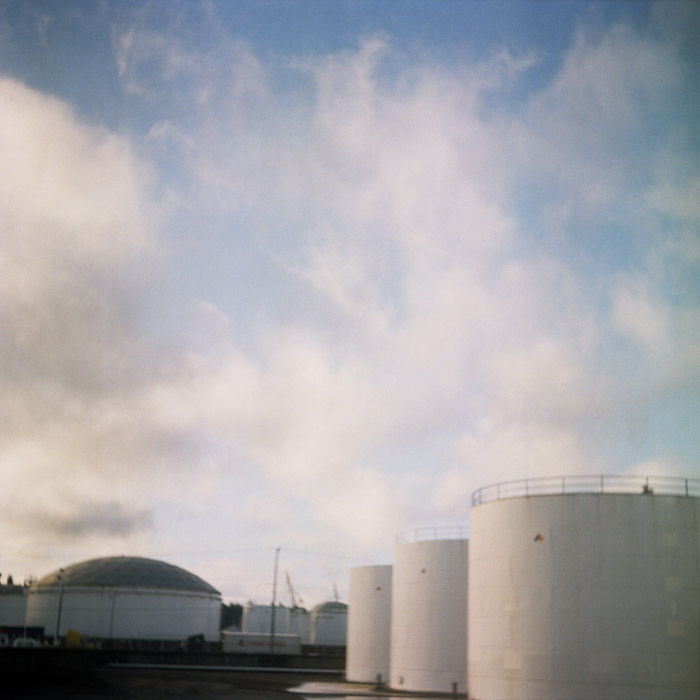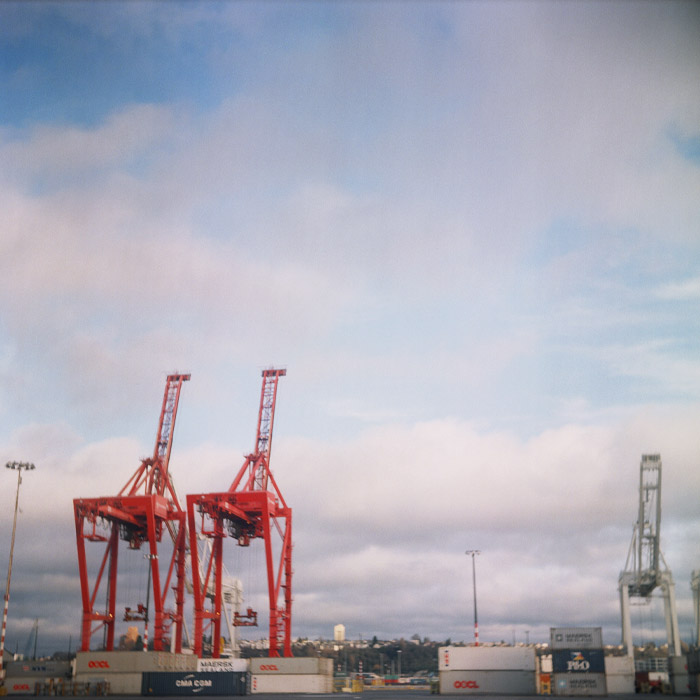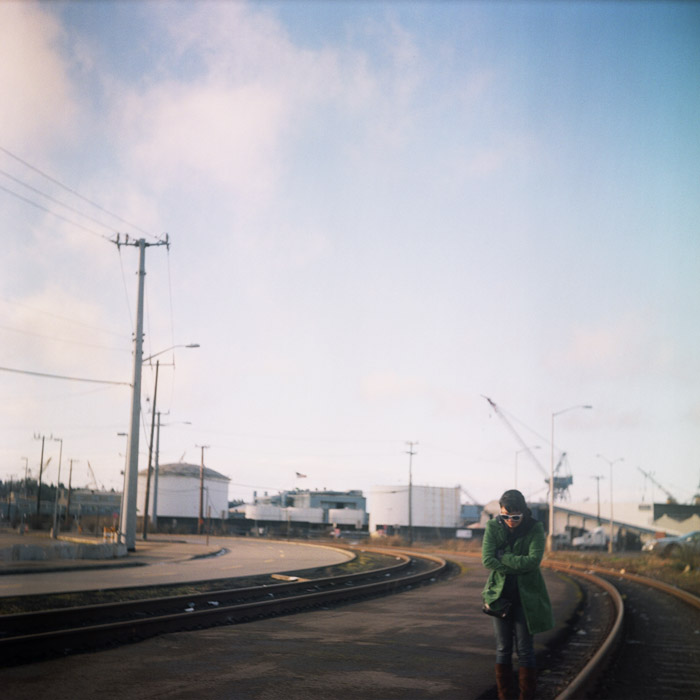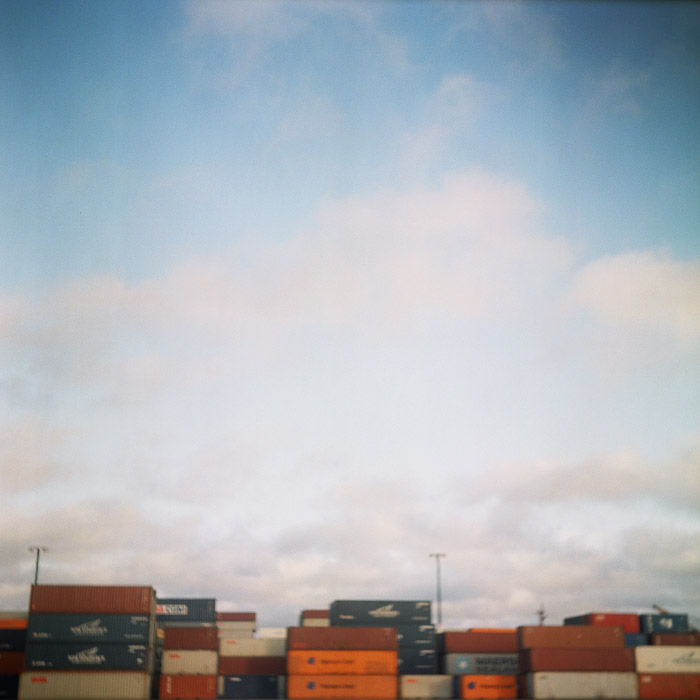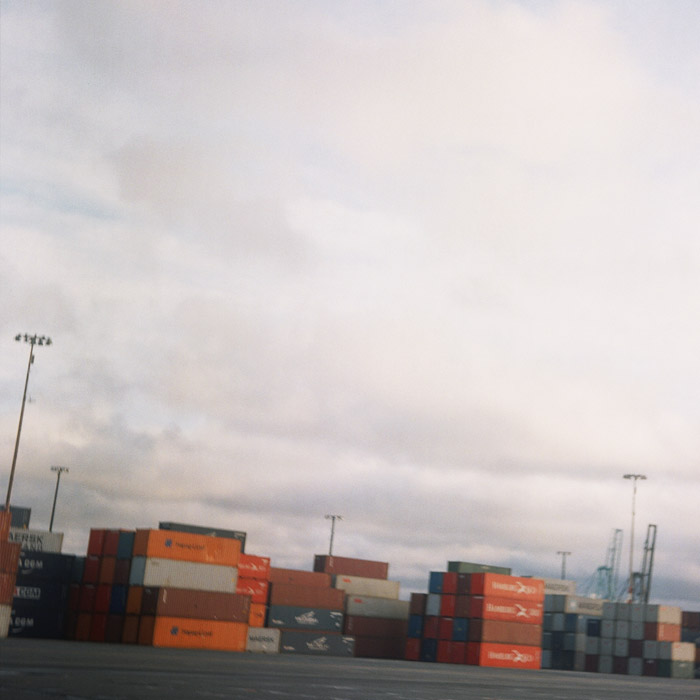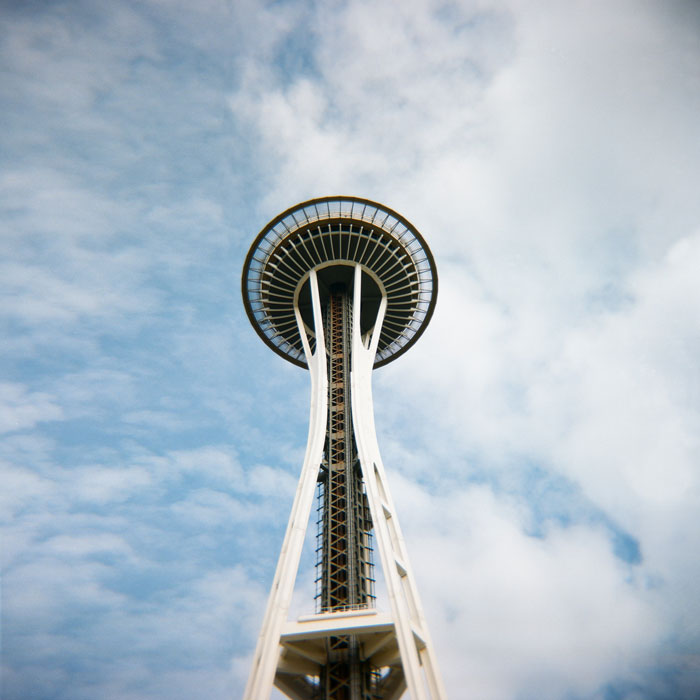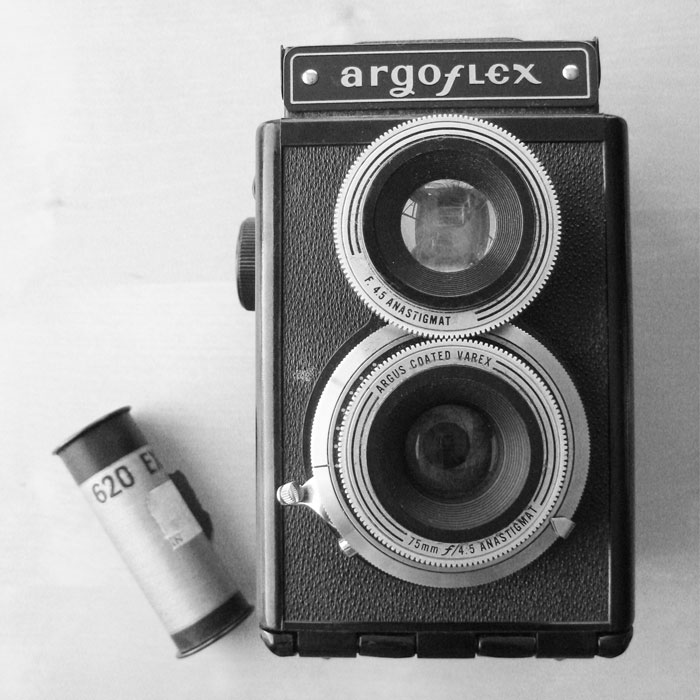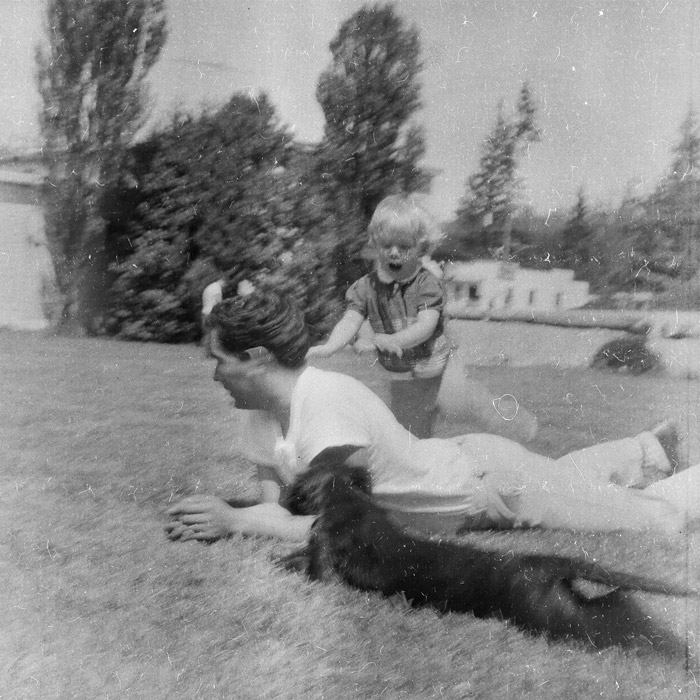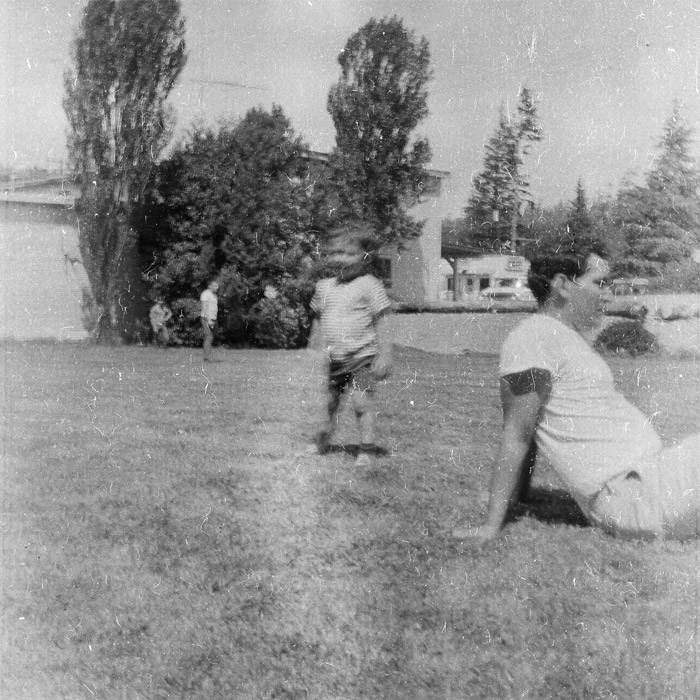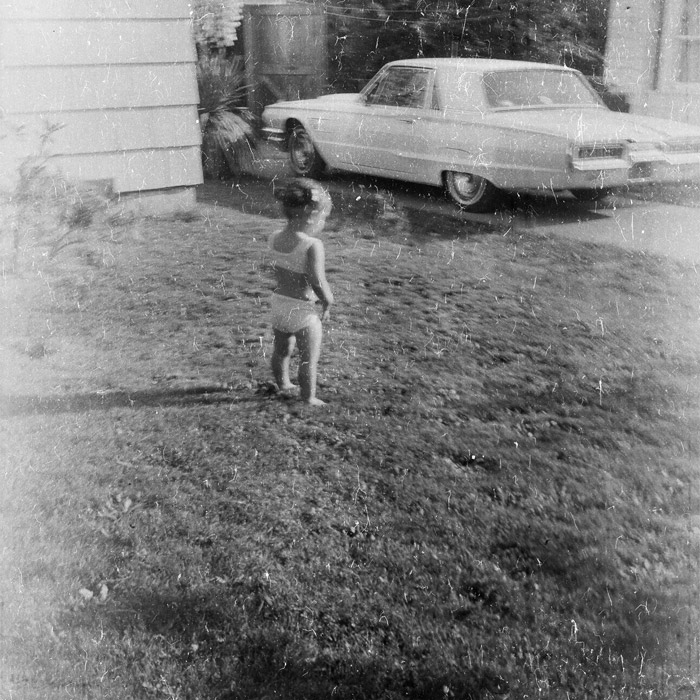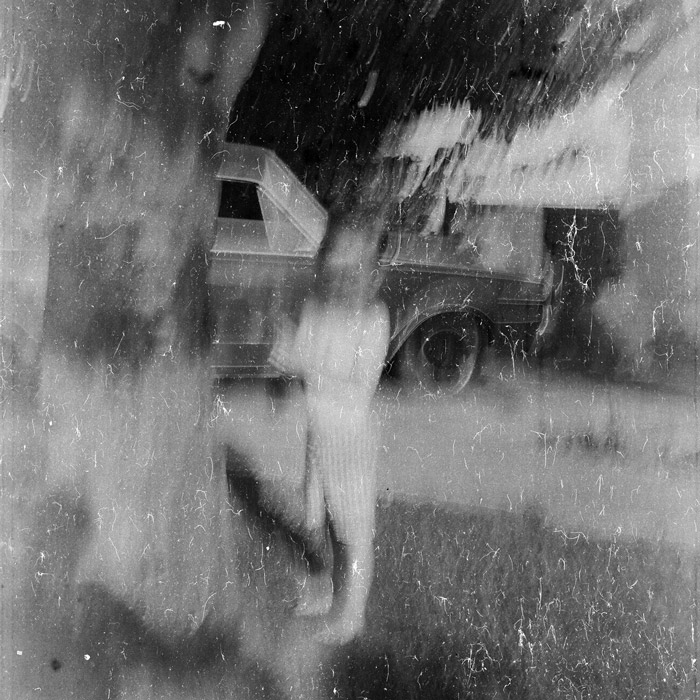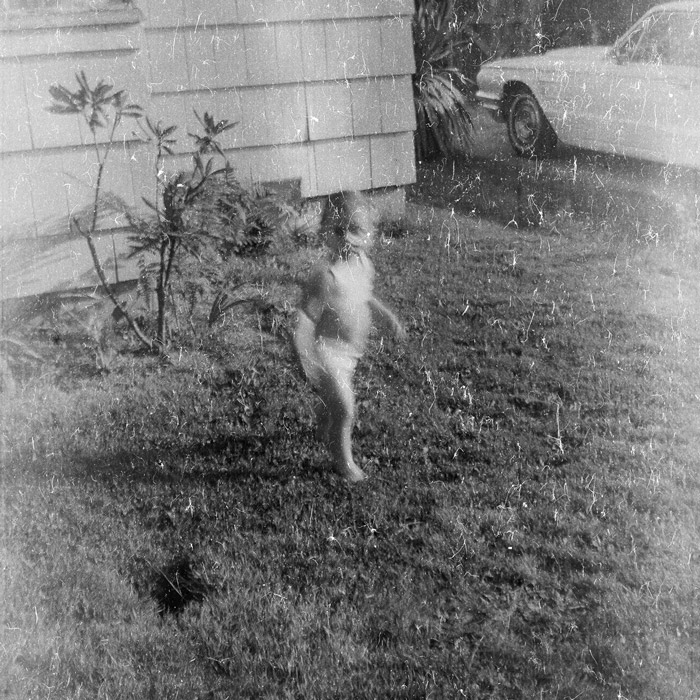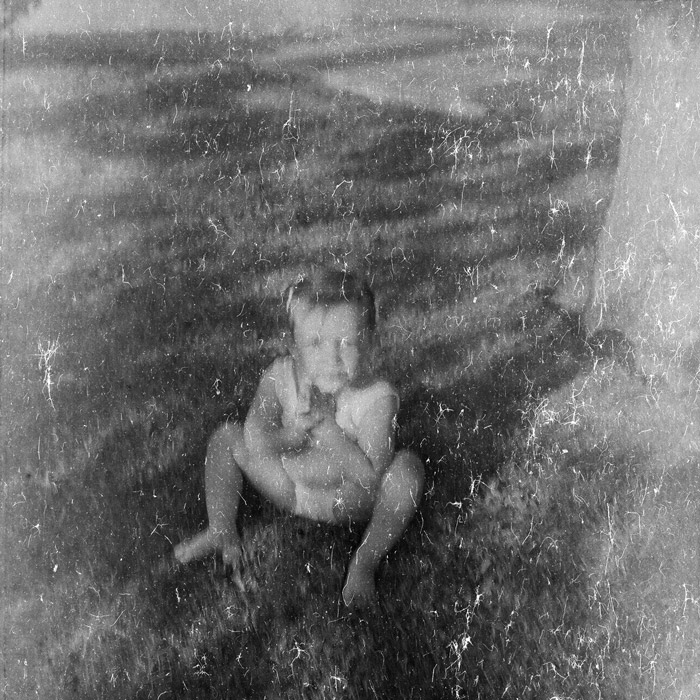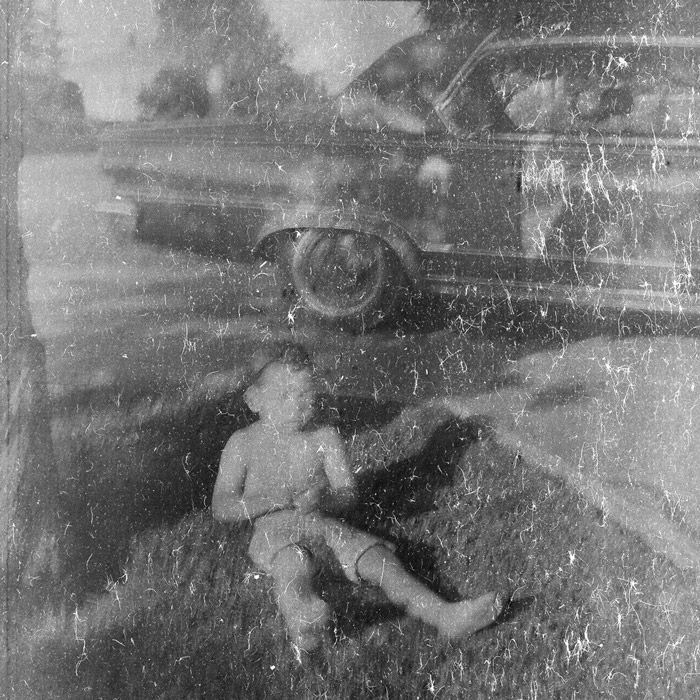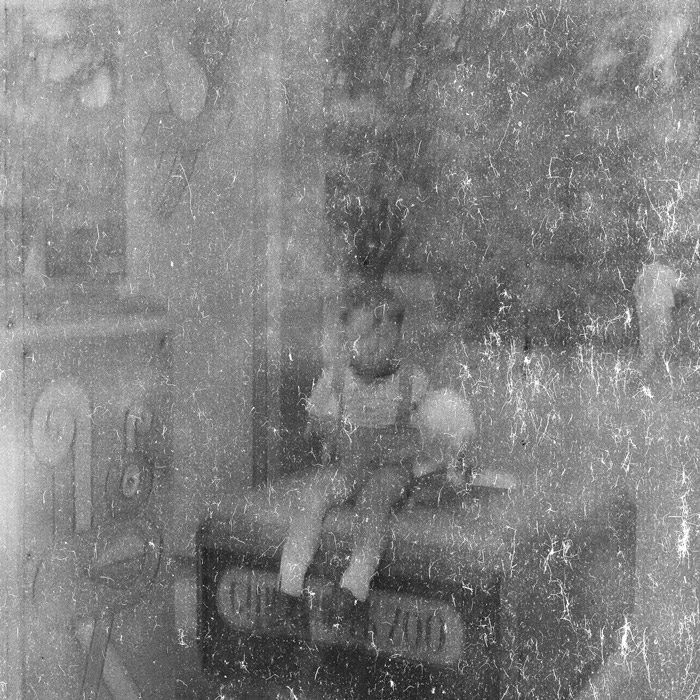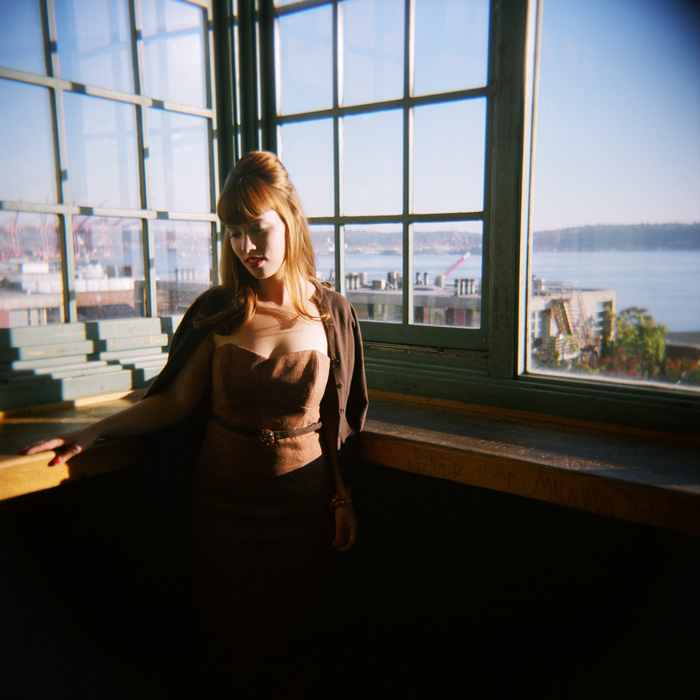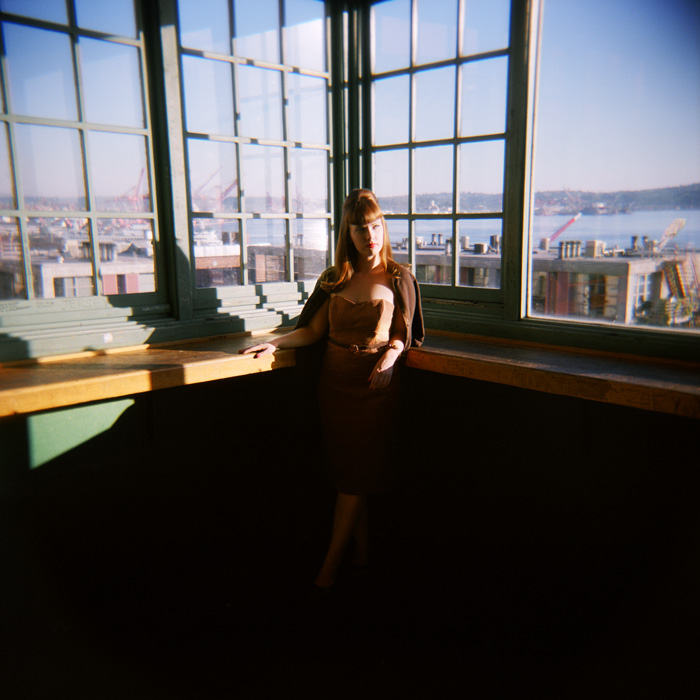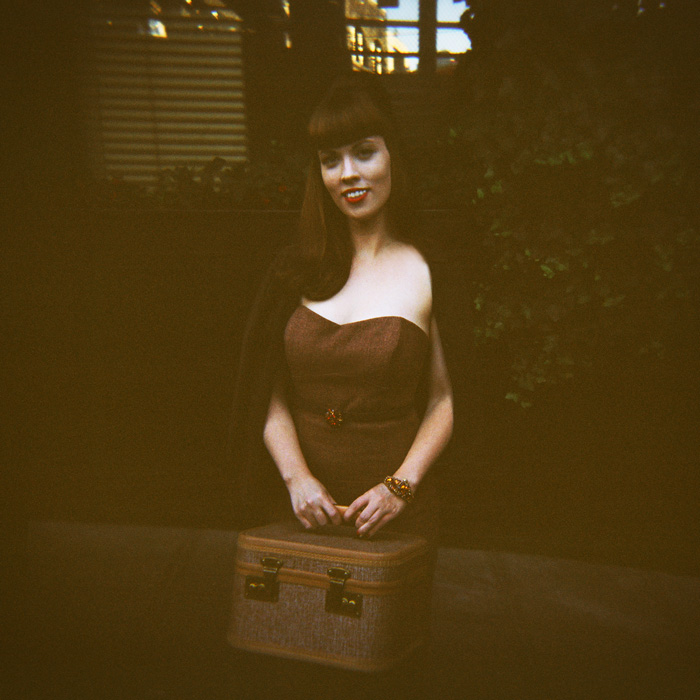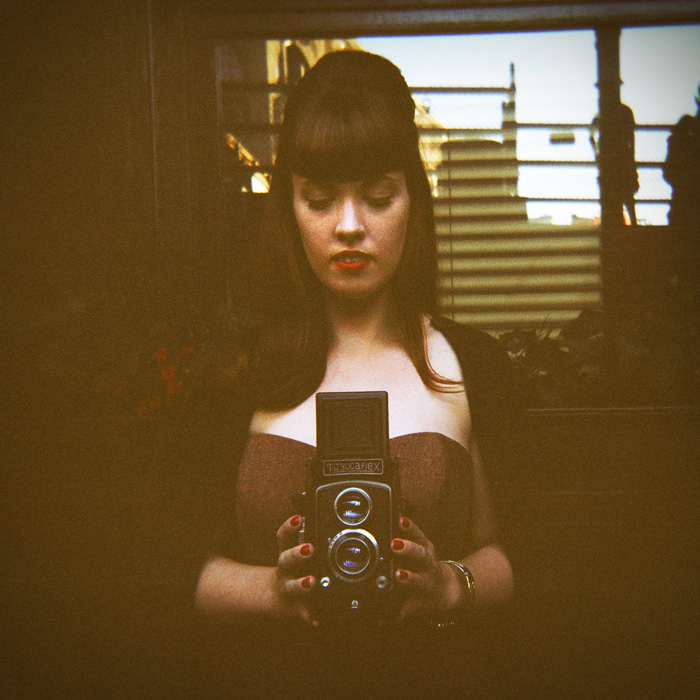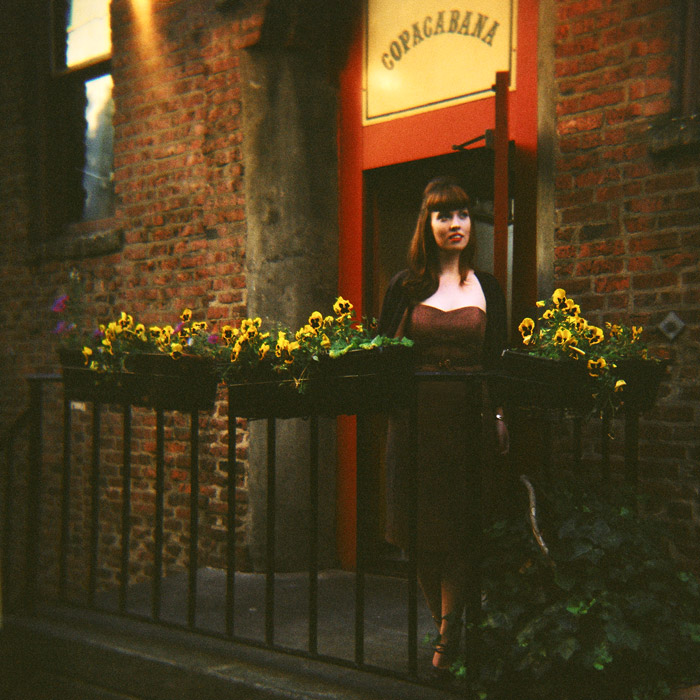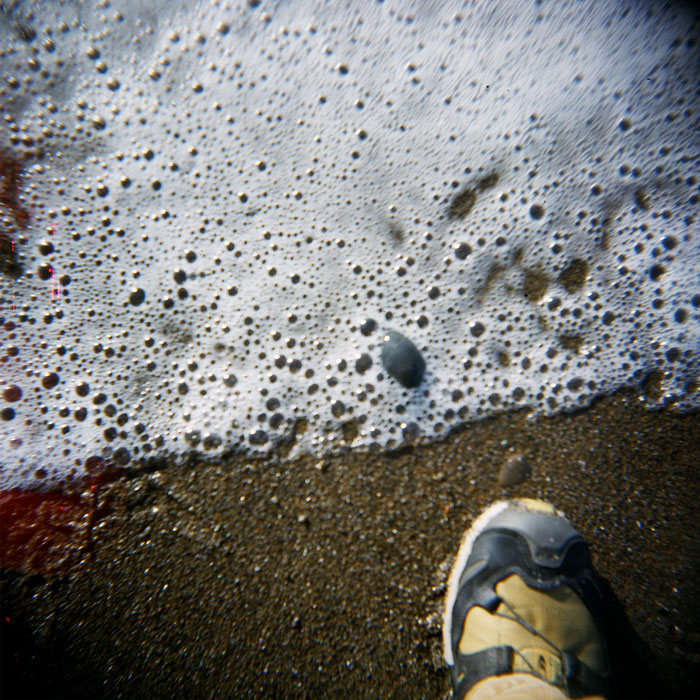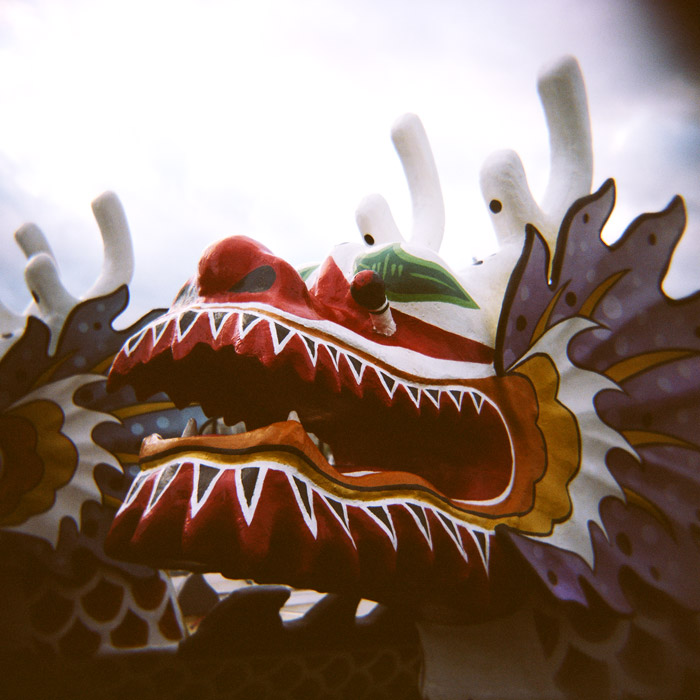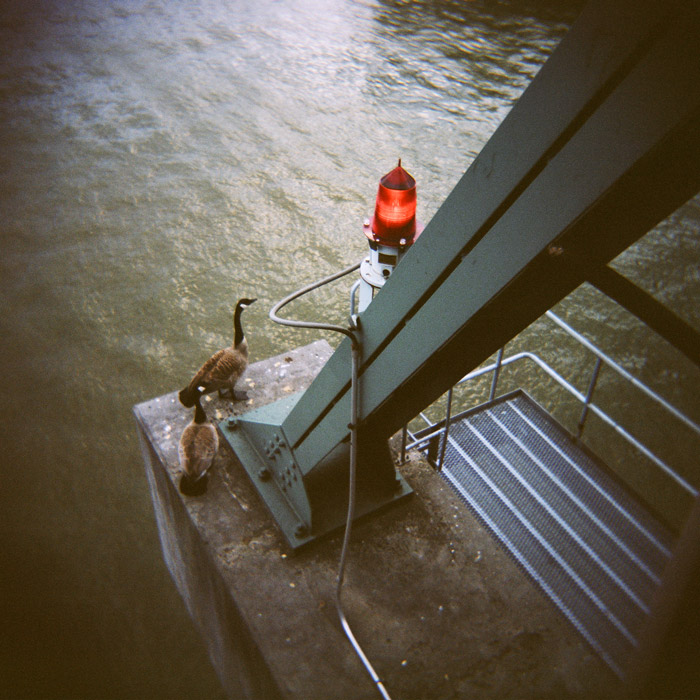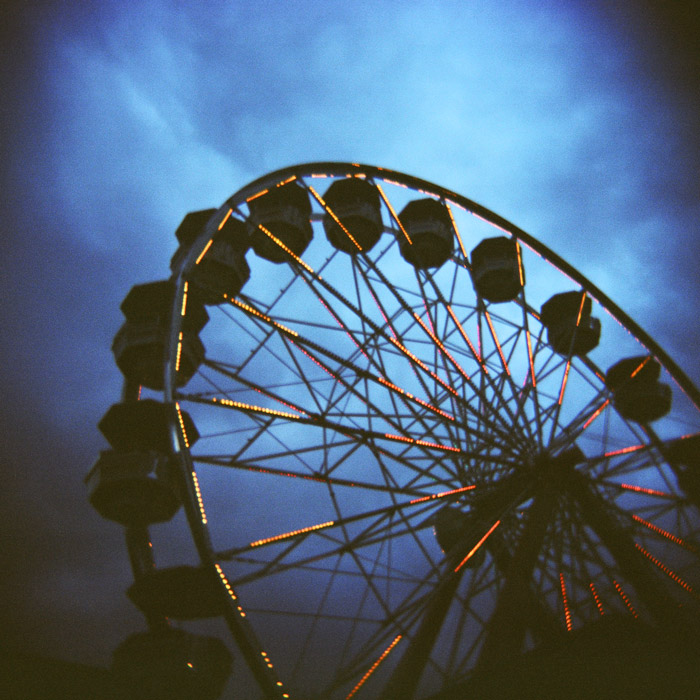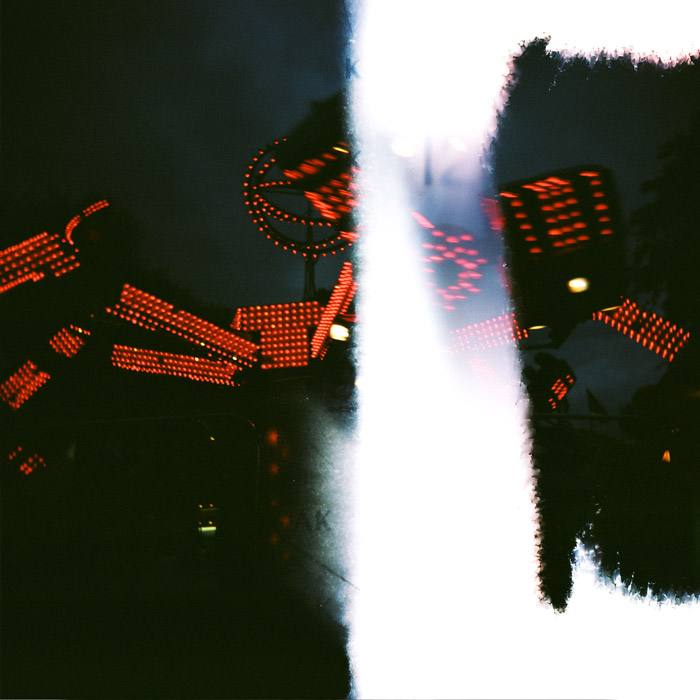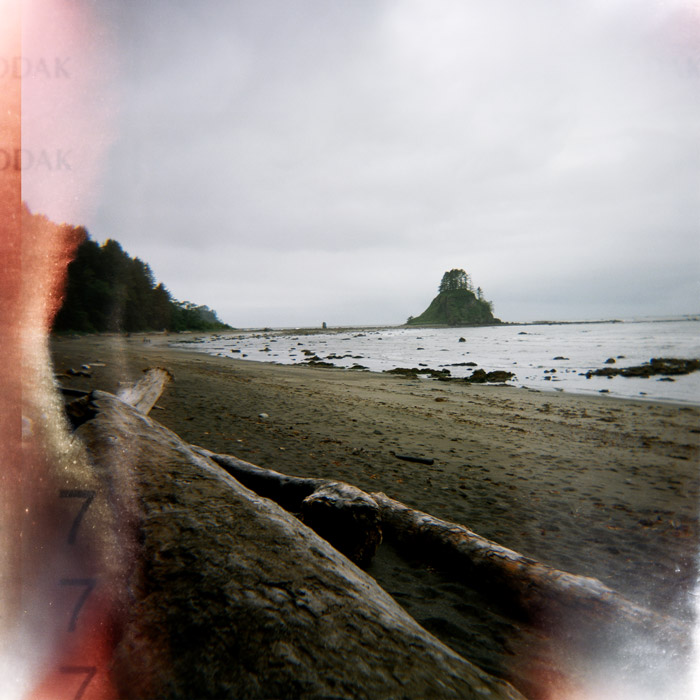I was going through some old photos recently, and came across this one I had always liked. It was from the first roll I ever shot through my old 1950s Toyocaflex TLR 120 camera while I was out walking around in the fall of 2011 to give it a test. I was down in SoDo near the port, and happened to be walking past an old favorite dive bar near where I used to work called Hooverville. So I pretended to take a shot of the glowing neon sign while this (probably) tough biker guy enjoyed himself a cigarette. Although, he didn’t seem to care one way or the other.
I don’t know how lucky you have to be to find three rolls of old, lost film over your lifetime, but apparently I’m that lucky. Film that went forgotten about for decades and decades, locked away in a camera that was also forgotten and locked away in some box in a closet somewhere. And somehow these rolls of film keep finding me.
What’s extra interesting about this roll is that I actually have been able to find out a little about it’s background and the people in the photos. Here’s the story:
One of my all-time best friends back in Minnesota, Katie Yernberg, came across five old cameras at a family garage sale for Steve & Bev Steberg, who have been very close to her since she was a wee girl. Knowing me, she knew they would make a perfect Christmas gift for a guy who collects vintage cameras. Also (from what I hear), I’m apparently difficult to shop for, so Katie was just relieved to find me anything I’d like. But little did she or the family know, one of the five cameras she gave me contained another present, a roll of Kodak Verichrome 620 film.
So after I got them developed we found out a little more about the backstory. The cameras belonged to the family’s late-grandfather, Clifford Steberg, the older gentleman in the photo above. It should also be noted he was a veteran of WWII, where he lost a leg and was obviously a total badass. The photos were taken around 1964 to 1965, and had been waiting patiently in a Spartus Full-Vue camera. On a side note, the camera is actually built for 120 film meaning someone had re-spooled it for 620.
The first three photos were from when the family was moving a new house onto the farm near Willmer, MN where Steve’s mother, Val was actually born. The kids in the photo are Steve when he was about 8 years old, his older brother Jim, and their cousins Gary and Mary on the right. From what I hear, this was a pretty big event on the farm, and it’s pretty cool since you can actually see the blocks and the crane they were using to lower the new house onto the old foundation.
The camping photos were taken at a state park somewhere in Minnesota where we find Steve at the water fountain when he was about 9 years old. Not only does Minnesota have numerous state parks, but they also run thick with water fountains, so it’s difficult to pinpoint which state park they could be in. The car to the right of the awesome camper trailer is apparently a ’56 Chevy Station Wagon, and the young man crying in front of it all is a friend who was visiting for the camping trip. What had him so upset is lost to history. The mother, Val Steberg, also makes her first appearance. And I may be to blame for the black stripe across the top of the last photo. I didn’t expect there to be a roll of film inside the camera when I first opened up the back, and unfortunately it wasn’t completely rolled through.
But either way, it’s always incredible finding a roll of film that had been lost for almost 50 years. The family was as happy and surprised as I was to finally see the pictures, which it felt good to actually be able to get them in the hands of some true owners. Which was rewarding and an added bonus (that hadn’t been the case in the other two rolls I’ve found seen here and here). And it’s another good lesson in always keeping your eyes open for hidden treasure.
It’s funny thinking about having to get to know a piece of equipment, but I’ve found myself having to do just that with an old camera of mine. People obviously have quirks and moods, but apparently inanimate objects can too. So a while back some friends and I made a trip over to Harbor Island in the Port of Seattle to do just that with my Toyocaflex TLR.
Being that it’s over a half a century old, it sort of behaves like an old man. The viewfinder is a little dark and cloudy, sometimes the shutter sticks at low speeds and it’s a bit heavy. It also has a bladder-control problem and eats dinner by 5:30pm. But I still love it, and I enjoy learning new things about how it behaves every time I take it out.
For over three and a half years now, I’ve been living just a few blocks from the world famous Space Needle (if you point the webcam to -45º you can see my apartment just left of center). Everyday I’m lucky enough to see something that symbolizes the great city of Seattle, and also one of the most iconic structures in the entire country.
So with that being said, I thought I’d dig up some Holgas I’ve taken over the recent past of this needle of space, as a reminder to myself to not take this beautiful thing for granted. Because I’m sure I have. My eyes have probably passed over some bit of its 605 feet and not a thought ran through my head about how incredible it is, or how lucky I am to view such a massive piece of art day in and day out. Here’s to being lucky.
In my book, anything that’s described as a monolith is pretty cool. And anything that appeared in the movie The Goonies, is also pretty cool. Therefore, Haystack Rock is pretty cool. Take that Arthur Fonzarelli.
You may notice the title to this photo is Haystack Rock Holga No.3. Yes, that is indeed the world famous Haystack Rock near the coastal town of Cannon Beach, OR. And it was indeed taken through the plastic lens of a Holga medium format camera on Kodak Professional 120 Portra 400VC film. But, “No.3” you say? “Where are the other two?” Well, tune in tomorrow you’ll find out.
As for this photo, if you look closely you’ll notice little purple-ish red specks in the sky. Those are actually kites, and there were a ton of people flying them up and down the beach. Never before did I feel such a strong urge to buy, rent or build a kite, or even attach a sting to a seagull. Anything to make use of the constant winds coming off the mighty Pacific.
Recently while searching through an antique shop, I bought a vintage camera, an Argus Argoflex E to be exact. It’s an old twin-reflex camera, made sometime between 1946 to 1948. But that’s not the cool part. Inside this camera was a little gem. Or at least the possibility of being a gem. Because inside this 70 year old camera sat an undeveloped roll on 620 film. The only thing was, no one knew what was on it, if anything. For all I knew, it could have been damaged beyond recognition after years of rotting in some musty basement and from the outside you couldn’t even tell if it was black & white, color or slide film.
But all that doesn’t matter because it was far too interesting to remain sitting in the back of this camera any longer. So Ibrought it down to the Panda Lab and got it developed. And to my surprise, it had ten beautiful images waiting to blow the minds of all who gaze upon them.
The thing is, only more questions arise now that it’s developed. Things like, “who is this family?”, “What happened to this camera to why it lay forgotten for what appears to be 45 years?” and “where are these people now?” It’s mind boggling and frustrating to think these questions will most likely never be answered. How could you take photos of your young family playing in the yard, only to then leave the camera and the film sit untouched for decades and decades? It’s even confusing to think about how the camera ended up on the shelves of an antique shop.
But as for now in the year 2010, after all the things that must have fallen into place for these images to cross my path, I feel mighty lucky.
NOTE: Thanks to the detective help of Andrea Nelson and her automotive scholar dad, they were able to decipher the white car in the photos to be a ’66 Ford Thunderbird and the others are early 60’s Dodges. So perhaps if the Thunderbird is a few years old, it could mean the film was taken sometime around 1968.
To help my friend, Laura Haithcock (a.k.a. Birdie Royale), in her bid for the Mad Men Casting Call, I volunteered my photography services with her submission. We even broke out theHolga to help aid in the look and feel department. Luckily, Laura does a pretty good job herself of looking like she just stepped out of the 1960s. She definitely made my job that much easier.
If you haven’t seen the Mad Men Casting Call, it’s a pretty cool promotion for the show. Check it out and be sure to vote for Laura. She’d be a great fit for the cast. And not only does she look the part, she’s even a seasoned ad veteran. Plus, they wouldn’t even need to run her through wardrobe. And if you need more convincing, take a look through the extra shots from our shoot.
As promised, here are some more images captured through that magical plastic lens of the Holga. These exposures come to us from a few locations from around the Pacific Northwest. Namely the Oregon coast, beautiful downtown Portland, OR and finally the remote beaches of Olympic National Park, along the Washington coast.
I don’t think I’ll ever get tired of shooting with my Holga. Its pure simplicity can’t be beat, and the beauty of film can't be denied. The more popular digital photography gets, the more rewarding it is to shoot film. So with that in mind, hopefully it won’t be long until I can expose a few more rolls and post some more.
Keep your eyes open for some new Holga shots coming along soon. Here’s a little taste of something that was hiding out on the hard drive.
As we speak, exposures are being prepped to take a swim in the developer, a quick dip in the stop bath and then finally soak in the fixer. It’s always an exciting time because you never really know what the end result will be. It’s one the beautiful things about film and it gets amplified even more through that magical plastic lens.


